Orchid Maxillaria
Last reviewed: 29.06.2025
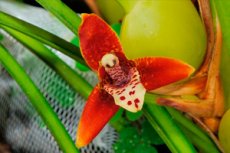
Maxillaria is a diverse genus of orchids in the Orchidaceae family, comprising over 600 species. These plants are found across a wide range of climatic zones, from lowland tropical forests to mountainous regions. Maxillarias are prized for their ornamental flowers, which vary from bright and large to small and delicate. Some species are also known for their distinctive fragrances, ranging from sweet to spicy, making them popular among orchid collectors and enthusiasts.
Etymology of the name
The name Maxillaria originates from the Latin word "maxilla," meaning "jaw," referencing the flower's structure that resembles an animal's jaw. The genus was first described in 1811 by the German botanist Karl Kunth, who distinguished it from other orchids based on its unique morphological features.
Life form
Maxillarias are predominantly epiphytic plants, growing on trees in tropical forests. Their aerial roots attach to tree bark, allowing them to absorb moisture and nutrients from their surroundings.
Some species are lithophytic, thriving on rocks, or terrestrial, growing in soil. This adaptability enables Maxillarias to occupy various ecological niches, ensuring their survival in different environments.
Family
Maxillaria belongs to the Orchidaceae family, one of the largest families of flowering plants, comprising approximately 28,000 species. Orchids are renowned for their intricate flower structures and diverse environmental adaptations.
A key feature of the family is its symbiotic relationship with mycorrhizal fungi, essential for seed germination. Like other orchids, Maxillarias display a wide range of ecological adaptations, including epiphytism, lithophytism, and terrestrial growth.
Botanical characteristics
Maxillarias are compact to medium-sized plants with pseudobulbs that serve as reservoirs for water and nutrients. The leaves are linear or strap-shaped, bright green, and grow from the tops of pseudobulbs.
Flowers vary in size and color depending on the species. They can appear singly or in clusters, with a distinct lip often adorned with bright colors or unique patterns.
Chemical composition
The chemical composition of Maxillarias is not fully studied, but it is known that many species contain anthocyanins, which contribute to the bright colors of the flowers. Additionally, aromatic compounds in some species give them their characteristic fragrances.
Origin
The genus Maxillaria is native to Central and South America, including countries such as Mexico, Costa Rica, Brazil, and Peru. These orchids are found across a wide range of altitudes, from sea level to mountainous forests at 3,000 meters.
Their natural habitats include tropical and subtropical forests, where they grow on trees, rocks, and soil, adapting to diverse climatic conditions.
Ease of cultivation
Maxillarias are considered moderately challenging to grow, making them suitable for experienced orchid enthusiasts. They require precise care regarding light, temperature, and humidity to ensure abundant flowering.
The plant adapts well to pot culture if provided with the correct substrate that allows good drainage and airflow around the roots.
Species and varieties
Popular species of Maxillaria include Maxillaria tenuifolia, known for its coconut fragrance, and
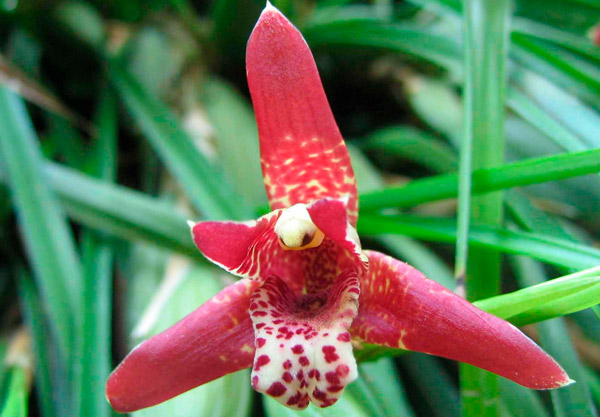
Maxillaria picta, recognized for its bright, spotted flowers.
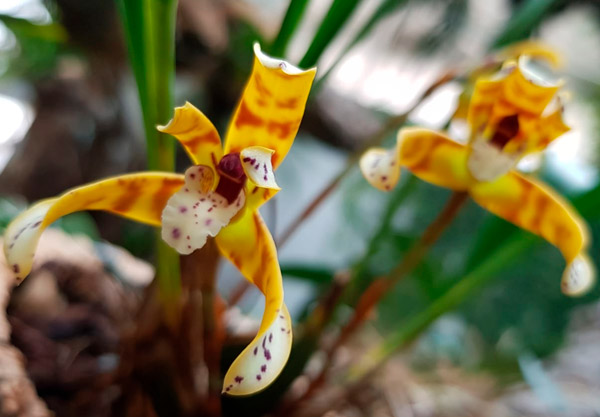
Other favorites include Maxillaria variabilis and
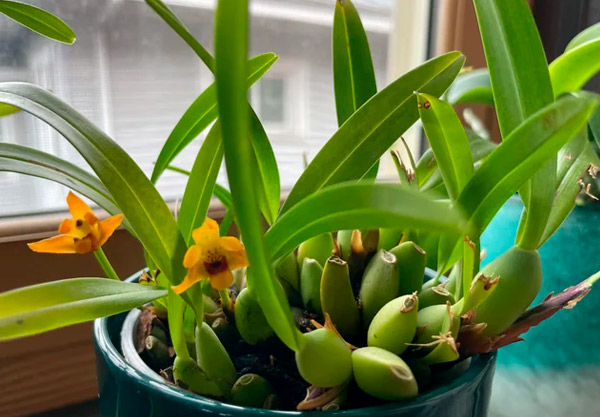
Maxillaria rufescens, valued for their extended blooming periods.
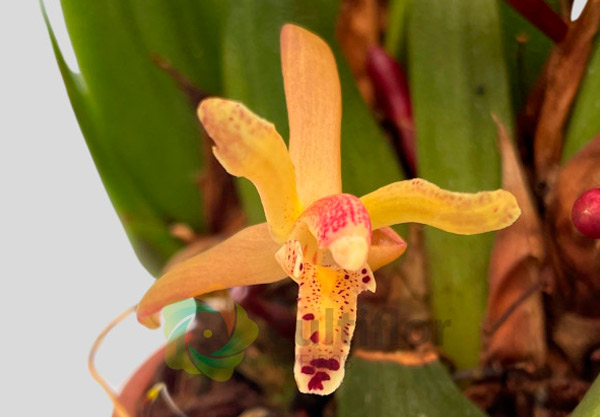
Size
The size of Maxillarias varies by species. Miniature types may reach only 10–15 cm in height, while larger species can grow up to 60–70 cm.
Flowers are generally 2–5 cm in diameter, though some species produce larger blooms. The compact size of the plant makes it well-suited for home cultivation.
Growth rate
Maxillarias have a moderate growth rate. They typically produce one or two new pseudobulbs annually, which may flower in the following season.
Growth can be accelerated with adequate light, regular watering, and proper fertilization. However, excessive fertilization may harm root health.
Lifespan
Maxillarias are long-lived plants. With proper care, they can thrive and bloom for decades. Older pseudobulbs remain functional, storing nutrients for the plant.
In their natural habitats, lifespan may be shortened due to environmental factors such as drought or competition for resources.
Temperature
Maxillarias prefer moderate temperatures, with an optimal range of 18–25 °C. Some high-altitude species can tolerate brief drops in temperature to 10–12 °C.
Nighttime temperature drops of 5–7 °C are recommended to stimulate flowering.
Humidity
Maxillarias require high air humidity, typically between 50–80%. In low-humidity environments, humidifiers or water trays can help maintain appropriate moisture levels.
Excessive moisture can lead to root rot, so it is essential to balance humidity with proper ventilation.
Lighting and placement in a room
Maxillarias thrive in bright, diffused light, mimicking conditions of tropical forests. East- or west-facing windows are ideal. Direct sunlight should be avoided during midday to prevent leaf burns.
To ensure even growth, rotate the plant periodically relative to the light source. If natural light is insufficient, grow lights can be used to supplement.
Soil and substrate
For cultivating Maxillaria, it is recommended to use a substrate with excellent drainage and aeration properties. An ideal mix includes:
- Coarse pine bark (60%);
- Sphagnum moss (20%);
- Perlite or small pumice stones (10%);
- Charcoal (10%).
The recommended substrate pH is 5.5–6.5. To ensure proper drainage, add a 2–3 cm layer of expanded clay or small gravel at the bottom of the pot.
Watering
During summer, Maxillaria requires regular yet moderate watering. Use the immersion method: submerge the pot with the plant in warm, soft water for 10–15 minutes, then allow excess water to drain. Water every 5–7 days, depending on temperature and humidity.
In winter, reduce watering to once every 10–14 days. Use room-temperature, dechlorinated water. Allow the substrate to slightly dry out between waterings to prevent root rot.
Fertilization and feeding
Water-soluble fertilizers with low nitrogen content and higher phosphorus and potassium levels are ideal for Maxillaria. Fertilizers with micronutrients like magnesium and iron are also beneficial.
Fertilizers should be diluted to 1/4 of the recommended concentration and applied during watering. Feed the plant every two weeks during active growth. Reduce or stop feeding entirely in winter.
Propagation
The best time to propagate Maxillaria is in spring when active growth begins. Propagation can also be done in summer before the flowering period.
The most common methods of propagation include dividing mature clumps and rooting new shoots. Seed propagation is less common due to the need for sterile conditions and symbiotic fungi for seed germination.
Flowering
Maxillaria typically blooms in spring and summer. Flowers can last 2–4 weeks, depending on the species. Blooming may occur once or repeatedly throughout the year.
Regular blooming is ensured through proper care, including consistent lighting, adequate watering, and timely feeding.
Seasonal features
In spring and summer, the plant experiences active growth and flowering. It requires regular watering, increased air humidity, and frequent feeding with fertilizers.
In autumn and winter, Maxillaria enters dormancy. Watering should be reduced, and feeding should stop. The plant should be placed in a cooler location with good ventilation.
Care specifics
Maxillaria requires stable air humidity of 50–70%. Use a humidifier or place the pot on a tray with water to maintain moisture, but avoid direct contact of roots with water.
Proper ventilation is essential to prevent diseases, but the plant is sensitive to drafts.
Indoor care
Maxillaria thrives indoors under bright, diffused light. Ideal locations are east- or west-facing windows. Shade the plant on hot summer days to prevent leaf burns.
Choose a pot that accommodates the root system; plastic or ceramic pots with drainage holes are preferable. The substrate should be fresh and well-aerated.
Repotting
For repotting Maxillaria, use pots slightly larger than the root system. Plastic or clay containers with drainage holes are ideal.
Repot every 2–3 years or when the substrate begins to decompose. Spring is the best time for repotting, just before active growth starts.
Pruning and shaping
Pruning is done after flowering, removing spent flower spikes and old pseudobulbs. This rejuvenates the plant and stimulates the growth of new shoots.
Damaged or dried leaves should be removed to maintain the plant's decorative appearance.
Common problems and solutions
Maxillaria is susceptible to root and leaf rot caused by overwatering. Prevention includes moderate watering and using a well-draining substrate.
Lack of light causes elongated leaves and prevents flowering. Overfertilization can lead to root burns.
Pests
Maxillaria can be affected by spider mites, thrips, and scale insects. These pests damage the leaves, weaken the plant, and reduce its decorative appeal.
Regular misting and maintaining high humidity can prevent infestations. Use insecticides or natural remedies, such as soap solutions, to treat pests.
Air purification
Like many orchids, Maxillaria helps purify indoor air by removing harmful substances like formaldehyde and benzene. This makes it an excellent choice for urban apartments and offices.
Safety
Maxillaria is a non-toxic plant, making it safe for children and pets. However, individual allergic reactions to its pollen are possible.
Winter care
In winter, Maxillaria should be kept at temperatures between 15–18 °C. Watering should be reduced to maintain light substrate moisture.
Preparation for spring includes increasing light exposure and gradually raising the temperature.
Beneficial properties
Beyond its ornamental value, Maxillaria improves indoor air quality by increasing humidity and reducing toxic substances in the environment.
Use in traditional medicine
In folk medicine, some species of Maxillaria are used to create aromatic oils and natural relaxation remedies.
Use in landscape design
Maxillaria is ideal for vertical gardens and hanging arrangements. Its compact size makes it suitable for limited spaces.
Compatibility with other plants
Maxillaria pairs well with other epiphytic plants, such as Phalaenopsis and Cattleya. They create harmonious compositions in gardens or interiors.
Conclusion
Maxillaria is a versatile plant that combines ornamental beauty, low maintenance, and environmental benefits. With proper care, it will become a stunning addition to any home or garden.
